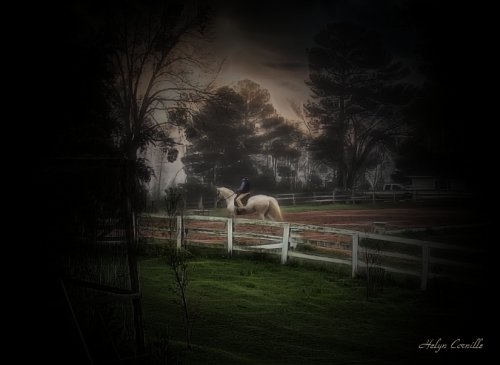Keepers of the primal
Keepers of the primal

“In ancient times, older women were the keepers of primal mysteries and were revered for their special wisdom.” In modern times, politicians advise eliminating the elderly, as foolishness is less obvious among ignorance.
Paraphrasing Isaac Asimov, “Education is not something you can finish.” With greater access to knowledge, a curious twist has invaded social media. Knowledge is on the guilty bench; education is a threat. Not everyone is willing to go where they would grow, and the ones who have finished an education that they have barely started, use tradition to keep others at their level. Tradition is peer pressure from dead peoples. Their nobility is not in their words but in the thoughts that they conveyed through their words. Their words were limited by the knowledge available at their time. Their ideas were an invitation to grow. They were the keepers of the primal, not because the original is true but because the original gives a sound base for evolution.
François Robichon de la Gueriniere warned against the false practice. “it is easier to turn to false practice than to do what is correct.” The solution for the foolish has been justifying ignorance by redefining what is correct. What is correct has changed as knowledge of equine functional anatomy has dramatically evolved, and the primal is very different from the original, which directed our ancestors thought. The wisdom of centuries can no longer be expressed with the same words, and there is difficulty. The same words are used, but they have a very different meaning. The ones willing to grow to upgrade the meaning of the same words to actual knowledge. The ones unwilling to grow refuse knowledge as it does not fit the old definition.
In a time where great efforts and money are used to justify fake equitation, the ones willing to grow are treated as pariahs. “In a world of lies, telling the truth is a revolutionary act” (George Orwell) Between stimulus and response, there is a space, and in this space resides the equestrian art. In the same line of thought, Claude Debussy wrote, “Music is the silence between the notes.” The ones who can only play electric guitar with boxing gloves cannot ride in the space; they can only apply the correct aids and expect a correct response. They have to reject the silence between the notes, the space between stimulus and response. They have to keep the equitation down to their level. Muscles do a lot more than what is taught in anatomy courses. A horse can reproduce the same apparent movement using different muscles. One coordination will be efficient for this horse, another will create dysfunction, but the move will look the same to a moderately educated eye.
“What makes it art is that the person who made it overcame the resistance, ignored the voice of doubt, and made something worth making. Something risky. Something human. Art is not in the eye of the beholder. It’s in the soul of the artist.” (Seth Godin) The equestrian art is not in what shows but in the immense pleasure of coordinating the horse’s physique efficiently for the athletic demand of the move. The art and the pure pleasure of working with a horse is the partnership, the conversation guiding the horse’s brain toward optimum coordination of the horse’s physique.
Every time we post a picture of one of our horses at work, peoples are attracted by the ease and effortlessness that rises from the images. The one who lives in the fake equitation confound ease with relaxation and use manipulation to achieve relaxation. They completely miss the target and indeed expose their horse to injuries. Muscles absorb considerable forces. They protect the joints from severe damage absorbing forces before impact. If they are “relaxed,” they expose the joints to impact forces that the structure cannot absorb without the buffering of the associated muscles. Ease and effortlessness is not relaxation. Ease and effortlessness result from subtle coordination of the horse’s physique. Education is complex, delightful, and intelligent. The dialogue rests on the integrity of the rider’s physique communicating with the horse through subtle nuances in muscle tone. There is no rein effect or legs effect. It is not about playing electric guitar with boxing gloves; it is about listening to the silence between the notes. Jean Luc Cornille


